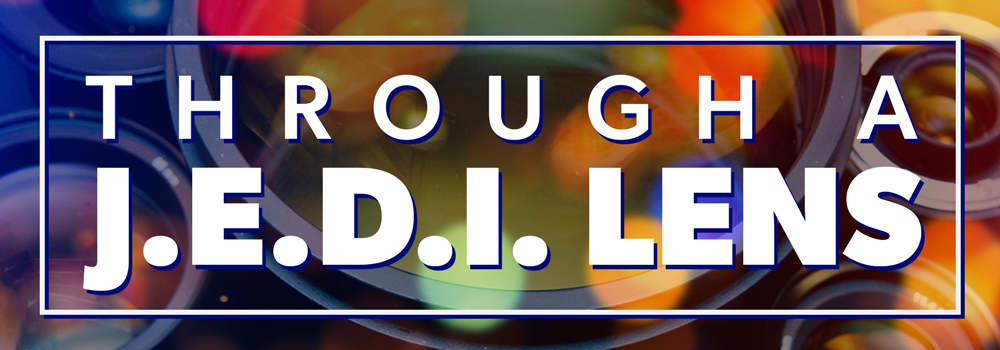Healthy Aging & Community

Through a J.E.D.I. Lens (Vol. 1 Issue 1): Healthy Aging & Community
By Jálin B. Johnson, director of the Office of Community & Engagement at the Salk Institute, and Salk Professor Gerald Shadel, Audrey Geisel Chair in Biomedical Science and director of the San Diego-Nathan Shock Center of Excellence in the Basic Biology of Aging
Healthy Aging
Unlocking Healthy Aging, this year's theme at the Salk Institute, allows us all to explore what this means to the many communities Salk scientists and staff identify with and are advocates for. After reviewing a 2014 study published in the journal Gerontologist and titled “Successful Aging Among LGBT Older Adults: Physical and Mental Health-Related Quality of Life by Age Group,” we came together to consider some of the intersections of 2SLGBTQIA+ lived experiences and successful aging through a justice, equity, diversity, and inclusion lens.
On July 25, 2024, Dustin Domingo, author of the co-edited volume With Love: What We Wish We Knew About Being Queer and Filipino in America, and Pat Lindsay C. Catalla-Buscaino (aka Dr. Pinky), founder and CEO of Kuwento Co. LLC., visited the Salk community to discuss these very intersections and more.
Physical and Mental health
In the 2014 Gerontologist study, the authors “examined physical and mental health quality of life as an indicator of successful aging, among LGBT older adults.” They noted that having “an understanding of the configuration of resources and risks by age group is important for the development of aging and health initiatives tailored for this growing population.”
The researchers recognized that “physical and mental health quality of life were negatively associated with discrimination and chronic conditions and positively with social support, social network size, physical and leisure activities, substance non-use, employment, income, and being male when controlling for age and other covariates.” This was also one of the first studies to include LGBT participants greater than 60 years old, which pointed to greater lengths of time of victimization and discrimination having quantifiable negative consequences, with strong modifying influences of the social context “in which LGBT people came of age and lived.”
Launched in 2020 at Salk, in collaboration with UC San Diego and the Sanford Burnham Prebys Medical Discovery Institute, the San Diego Nathan Shock Center of Excellence in Basic Biology of Aging focuses on the heterogeneity of aging. That is, what is the biological underpinning for why not all individuals age at the same rate and are differentially susceptible to diseases and disabilities for which age is the biggest risk factor. While inherited genetics and environmental factors like exposure to pathogens and toxins clearly play a role in this, how these intersect with sex, gender, ethnicity, and lifestyle is very much an open question in need of more research.
The results of a 2014 study published in the American Journal of Orthopsychiatry and titled “The health equity promotion model: Reconceptualization of lesbian, gay, bisexual, and transgender (LGBT) health disparities” provide a salient example of how the unique experiences of LGBT people influence the aging process and highlight the need to combine physical and mental quality-of-life measures with basic biological parameters to fully understand human aging.
When looking through a J.E.D.I. lens, we considered the following –
The authors of “Successful Aging Among Older LGBTQIA+ People: Future Research and Implications,” an opinion piece published in 2021 in Frontiers in Psychiatry, note that “factors such social isolation, difficulties in accessing healthcare, lack of social and family support…and greater probability of having had lifetime exposure to experiences of discrimination and social stigma related to sexual and gender identity status are all associated with the presence of negative health outcomes.
This reality is congruent with the Minority Stress Theory, which states that living with stressors throughout one's life negatively impacts the health, well-being, and successful aging outcomes of older 2SLGBTQIA+ people.
- As we focus on “Healthy Aging & Community,” how might we consider what we know of the lived experiences of ourselves and our communities, alongside our commitment to “discovering the fundamental causes of aging and finding new ways to prevent and treat age-related disease”?
- How might stressful social factors (including discrimination and isolation), when paired with known genetic and environmental factors, impact healthy aging in historically marginalized communities?
- Frameworks like the Health Equity Promotion Model, highlight “(a) heterogeneity and intersectionality within LGBT communities; (b) the influence of structural and environmental context; and (c) both health-promoting and adverse pathways that encompass behavioral, social, psychological, and biological processes.” How would centering health equity encourage more inclusive research?
